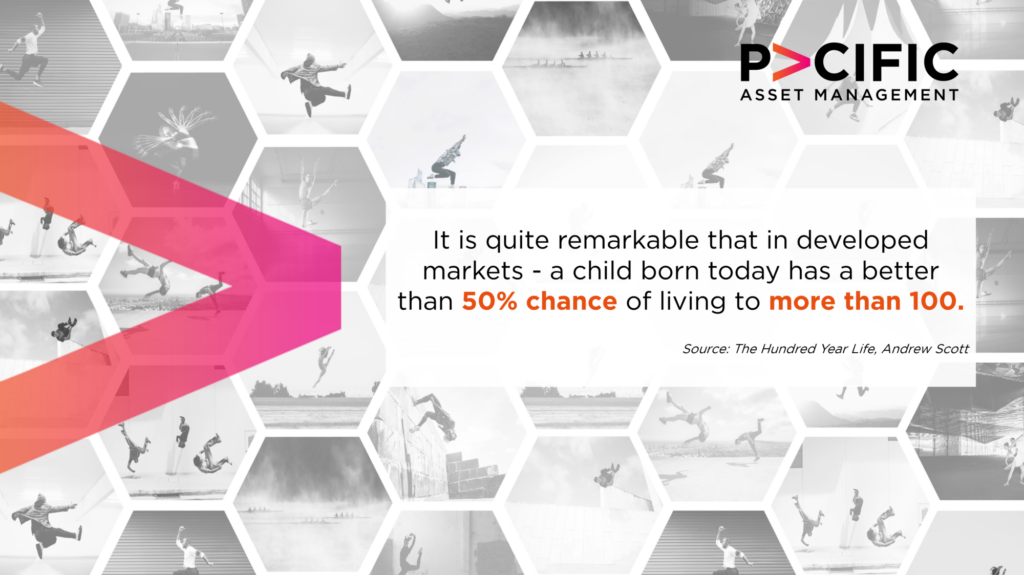Pacific Asset Management has a novel strategy in its Longevity and Social Change fund, targeting firms linked to the ageing of the population and increasing life expectancy worldwide while also incorporating environmental, social and governance (ESG) criteria into the investment process.
Companies are rapidly acknowledging older consumers are more active, adventurous, and tech-savvy than they are typically given credit for.
Meanwhile, younger generations tend to adopt a long-term view of their financial, emotional and physical wellbeing, prioritising healthier lifestyles, flexible work environments and embarking on securing their financial future earlier in life than their parents did.
The challenge for investors is to identify those companies whose products and services are well placed to create a meaningful connection with the ageing consumers and capture the changing behaviour of generations which will increasingly live to celebrate their centennial birthdays.
Over the course of the past two centuries, we have seen life expectancy in high income countries increase by two to two-and-a-half years for every decade that has passed. In recent decades this has been driven by extending the life spans of older people rather than reducing mortality in the early and the middle years of life.
In developed markets a child born today has a better than 50 percent chance of living to more than 100.

The social and economic implications of ageing populations are becoming increasingly apparent.
The global population that is over 60 years old reached 900 million or 12 percent of the world’s population in 2015 and is expected to more than double by 2050 to 2.1 billion and more than triple by 2100 to over 3 billion.
Populations in the US, Europe, and Japan are ageing more rapidly than ever before. The UN is predicting a quarter of the world’s over 60s – 500 million people – will reside in China come 2050.
This poses several challenges such as declining working-age populations and a widening savings gap which pressures the governments around the world to increase the statutory retirement age and encourage personal savings.
Rising healthcare costs is another certainty. In the US healthcare spending doubles at 65 and quadruples at 85.
The changing demand drivers within the economy linked to products and services for older people will continue to present opportunities, especially when one considers around two thirds of all US wealth is in the hands of the over 55s, a demographic that currently accounts for a third of the population.
Healthcare, financial services, housing, travel and leisure and education are just some examples of the sectors benefitting from longevity and changing demographics, and offer potential excess returns.



